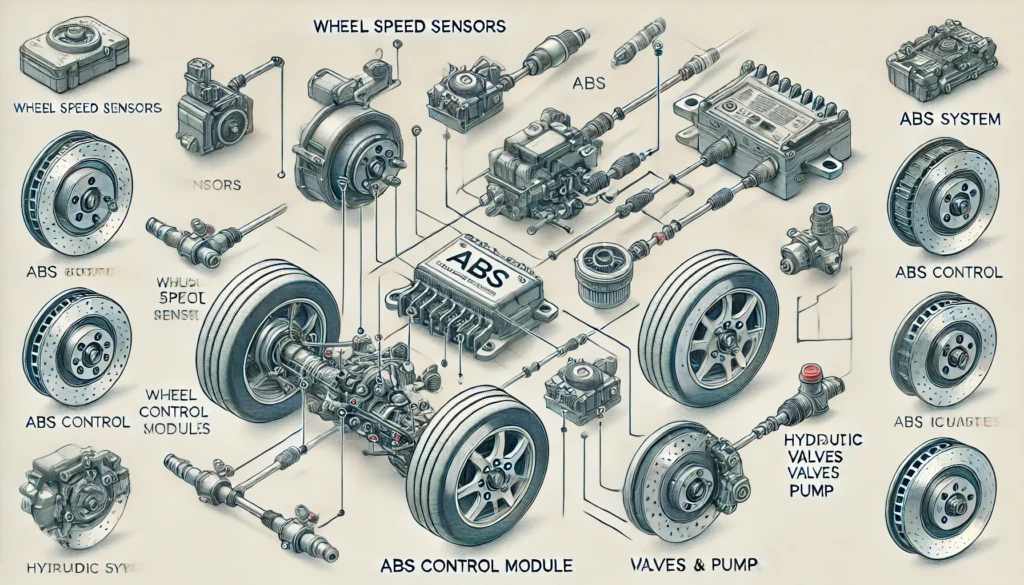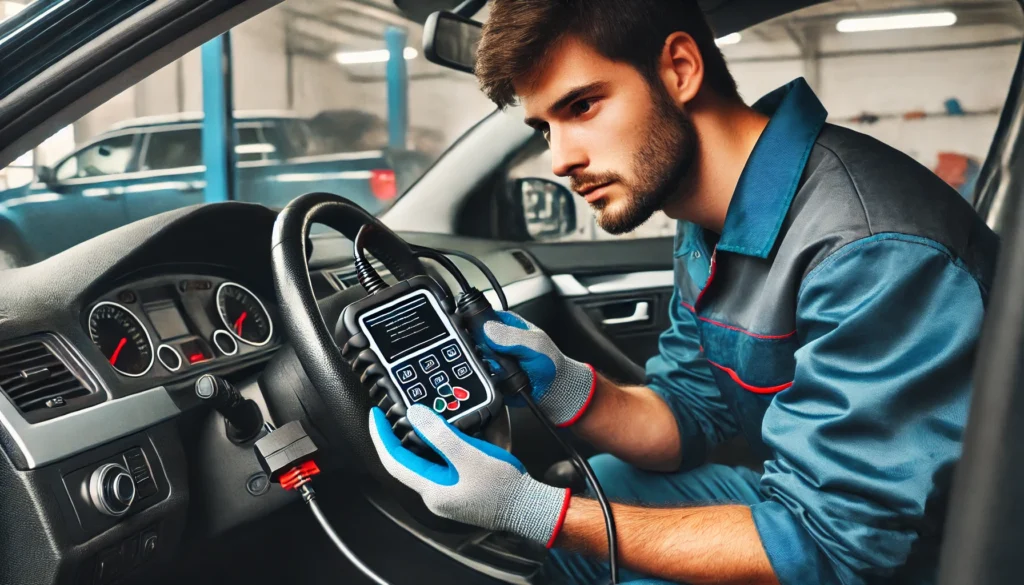The Anti-lock Braking System (ABS) is a vital safety feature in modern vehicles, designed to prevent the wheels from locking up during braking and to maintain steering control during emergency stops. When the ABS light illuminates on your dashboard, it indicates a problem within the system that requires prompt attention. Repairing an ABS fault involves a systematic approach to identify and resolve the issue effectively.
Understanding the ABS System
The ABS system comprises several key components that work together to prevent wheel lockup:
- Wheel Speed Sensors: Monitor the speed of each wheel and send data to the ABS control module.
- ABS Control Module: Processes data from the wheel speed sensors and controls the hydraulic valves.
- Hydraulic Valves: Regulate brake pressure to prevent wheel lockup.
- Pump: Restores pressure to the hydraulic brakes after the valves release it.

Steps to Repair an ABS Fault
- Diagnose the Issue:
- The first step in repairing an ABS fault is to diagnose the issue accurately. Connect an OBD-II scanner to the vehicle’s diagnostic port to read the error codes stored in the ABS control module. These codes will help pinpoint the specific problem within the system.
- Inspect and Replace Wheel Speed Sensors:
- If the error codes indicate a problem with the wheel speed sensors, inspect them for dirt, debris, or damage. Clean the sensors if they are dirty. If a sensor is damaged, it should be replaced. Ensure the wiring connected to the sensors is intact and free from corrosion.
- Check the ABS Control Module:
- Inspect the ABS control module for any visible signs of damage or corrosion. Ensure all electrical connections are secure. If the module appears faulty, it may need to be replaced or reprogrammed. This is a more complex repair that might require professional assistance.
- Examine the Hydraulic Valves and Pump:
- Test the hydraulic valves and pump for proper operation. Use the procedures outlined in the vehicle’s service manual to check these components. If they are malfunctioning, they should be repaired or replaced. This step often requires specialized tools and expertise.
- Repair or Replace Damaged Wiring:
- Damaged or corroded wiring can disrupt the ABS system’s operation. Inspect all wiring connected to the ABS components and repair or replace any damaged sections. This step ensures proper communication between the sensors and the control module.

Common Repairs for ABS Faults
- Cleaning or Replacing Wheel Speed Sensors:
- Dirt and debris can interfere with the sensors’ ability to accurately monitor wheel speed. Cleaning the sensors or replacing damaged ones is a common repair.
- Replacing the ABS Control Module:
- The control module can fail due to electrical issues or software glitches. Replacing or reprogramming the module is often necessary.
- Repairing Hydraulic Valves and Pump:
- Malfunctioning hydraulic valves and pumps can be repaired or replaced to restore proper brake pressure regulation.
- Fixing Electrical Issues:
- Addressing issues with the wiring or fuses ensures reliable operation of the ABS system.
Importance of Professional Assistance
While some ABS repairs, such as cleaning sensors, can be done at home, others require professional expertise. Complex issues involving the ABS control module, hydraulic valves, and pump are best handled by certified mechanics who have the tools and knowledge to perform the repairs safely and effectively.
Conclusion
Repairing an ABS fault involves diagnosing the issue using diagnostic tools, inspecting and replacing faulty components, and ensuring proper operation of the system. By understanding the common causes of ABS faults and taking the appropriate steps to repair them, you can maintain your vehicle’s safety and performance. Regular maintenance and timely repairs are essential for the optimal functioning of the ABS system.